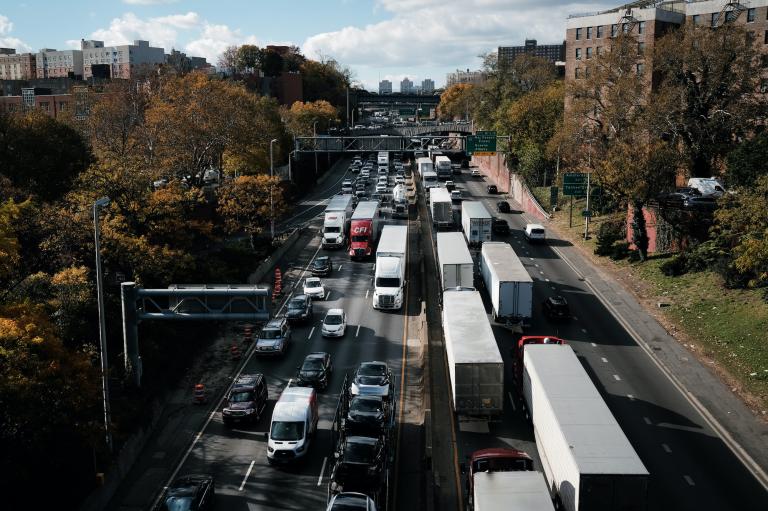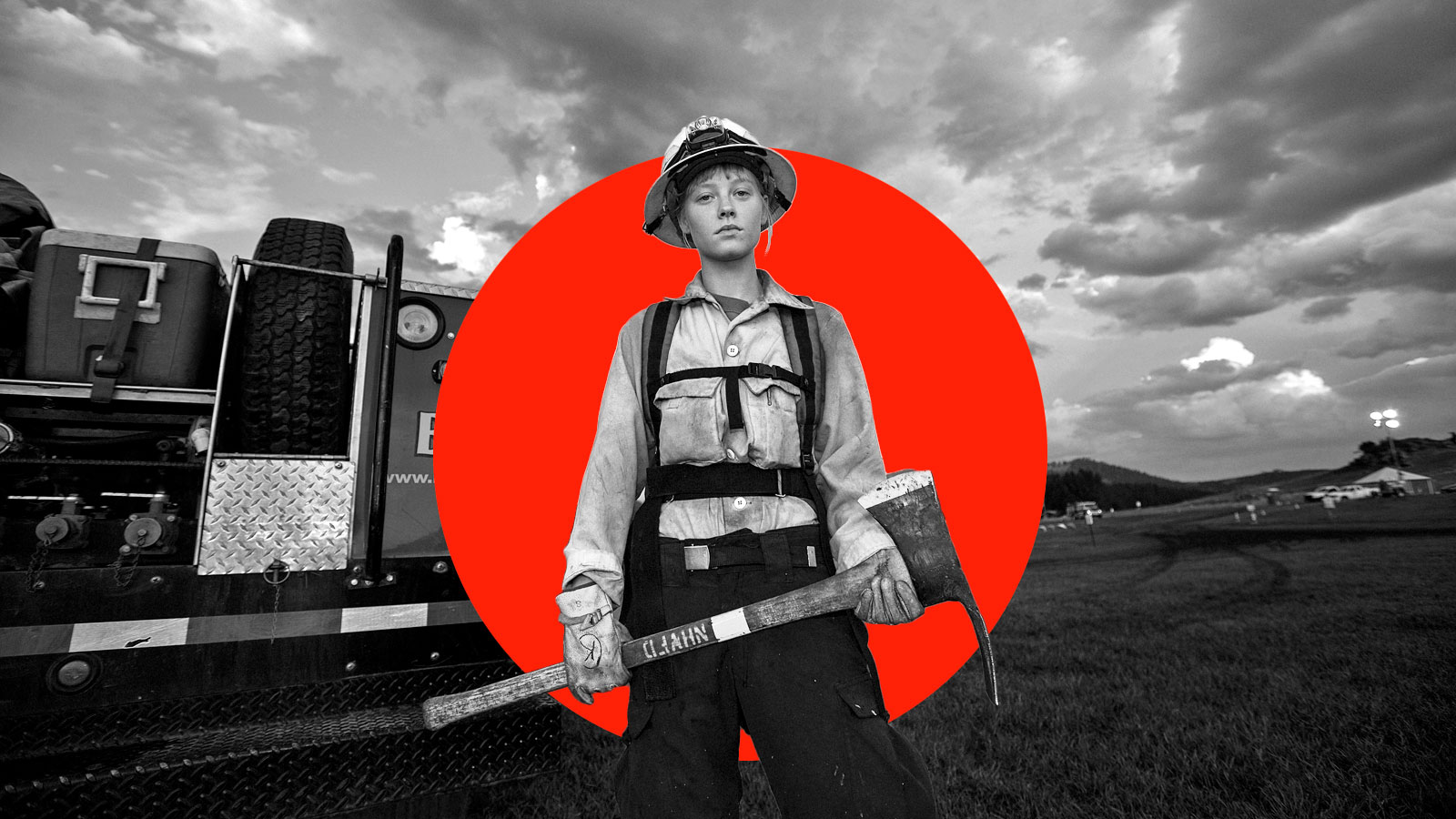When Sophia Huston started working as a hotshot — a specialized wildland firefighter with advanced technical training — she was 19 and didn’t know what she was getting herself into. She was physically fit and worked out regularly, but she wasn’t ready for preseason training, when the U.S. Forest Service, the agency she worked for, weeds out the unprepared with intense and physically demanding drills. “You’re going on hikes with full gear and chainsaws,” she said. “I weigh about 115 pounds and I’m carrying about upwards of 80 pounds of gear up a hill. I’m feeling the stress on my body and joints. I’m waking up in the middle of the night to eat food because I can’t get enough calories in.”
Shortly after the training began, Huston got what would be her last menstrual cycle of the fire season. She’s been working in fire for six years now and hasn’t gotten her period for the past three years, which she speculates is due to lack of sleep, poor quality of food, and the physical strain of the job. She doesn’t know what the long-term repercussions of working in the fire service are on her health and fertility. “I just know it’s not good for you,” she said. “It’s not very conducive to fertility and reproductive health.” New research suggests that Huston’s hunch is spot-on.
Smoke, heat, fire-suppressing chemicals, and the physical exertion required to put out and control fires all have effects on humans, but the body of published research on how firefighting affects health is astonishingly small. Studies have shown that being exposed to smoke in general is linked to lung cancer and cardiovascular disease. But little is known about the cumulative impacts of fighting fires year after year, whether soot and other compounds can get absorbed through the skin and cause health problems, and how, exactly, smoke impacts the body in the long-term.
The ways in which fighting fire, and fire itself, affect women are even less understood. Women make up a tiny fraction of the national fire service, both in structural fire departments — the local departments that put out house fires — and the wildland crews that fight fires that occur in the wilderness and areas where wildland meets urban zones. They operate in a system that was built for and around men. And despite evidence that even short-term smoke exposure can affect pregnancy outcomes, female firefighters receive little to no information from their employers on how fire could impact fertility or pregnancy. “Nobody says, ‘smoke is bad, don’t stand there,’” Megan Saylors, a career wildland firefighter for a federal agency, told Grist. “It’s just such an accepted part of our work environment.”
A recent study published in the journal Environmental Health builds on the slim body of research on how work in the fire service specifically affects the reproductive health of women, and trans and nonbinary people who can get pregnant. By analyzing nearly 2,000 pregnancies in more than 1,000 female firefighters, the study found that self-reported miscarriage was 2.3 times more common among female firefighters than it was among female nurses, a cohort that is exposed to similar chemicals and work strains. Twenty-two percent of female firefighters miscarried, compared to 10 percent of female nurses.
The results are similar to those of a 2018 analysis showing that 27 percent of pregnancies in a cohort of 1,821 female firefighters ended in miscarriage — higher than the miscarriage rate in the general population, which is 13.5 percent. But the new study went further by separating firefighters by volunteer versus career status and comparing structural firefighters to wildland firefighters.
The study found that, overall, volunteer firefighters had increased risk of miscarriage compared to career firefighters. And volunteer wildland firefighters had nearly three times the risk of miscarriage compared to career wildland firefighters. Less than 5 percent of career firefighters are women, and 84 percent of the female firefighters in the U.S. are volunteers, which means a disproportionate percentage of the women who fight fires in the U.S. may be at increased risk of miscarriage.
Alesia Jung, a postdoctoral student at the University of Arizona and the lead author of the study, told Grist that she was surprised by the results of her research. She had initially hypothesized that career firefighters would present with the highest risk of miscarriage, because those women are exposed to fires more often than volunteers. “Generally the assumption is that career firefighters who generally respond to more fires in a year would have greater occupational exposures than volunteer firefighters who typically serve smaller communities and may have a smaller amount of fire responses,” she said. “So it was really interesting to see that volunteer firefighters appeared to have a greater risk of miscarriage, and this did vary by wildland firefighter status.”
Jung said that more research needs to be done on why firefighters face such high rates of miscarriage and what can be done to better protect them. Current and former firefighters agree.
Saylors, who has worked on crews based in Alaska, southern Nevada, southern Utah, California, and Oregon, says she’s never worked for a department that had policies or advisories in place to inform women about the risks of the job to their pregnancies. “I know women who were still working on a fire engine doing wildland stuff eight months pregnant. But then you have other people who, as soon as they find out they’re pregnant, they stop doing operational stuff,” she said. “Structural departments and wildland agencies struggle with, what do we do with those women? When do we no longer go put out the fire? When do we no longer go help with a prescribed fire during pregnancy?” Saylors said federal firefighting agencies should collect and conduct research on fertility and put policies in place to protect employees based on that research.
Zora Thomas, a seasonal wildand firefighter working for the Forest Service, told Grist she wasn’t surprised that wildland firefighters face an increased risk of miscarriage due to the requirements of the job. “Exposure to smoke is so ubiquitous and unavoidable, and wearing a respirator really isn’t practical or even possible due to the intensity and duration of our working days,” she said. “It doesn’t surprise me that the obvious occupational hazards we face would have some impact on health and pregnancy, and I would expect that there are also impacts to male reproductive health.”
There’s some evidence that the fertility of male firefighters is also jeopardized by smoke and other hazards of the job. A 2019 study of Danish male firefighters found full-time firefighters were at greater risk of infertility than a comparison group of men in the military. Another study published in October that tracked male fertility in the general population following 10 days of unprecedented hazardous smoke in Oregon during the 2020 fire season found that semen quality greatly deteriorated following the onset of hazardous air quality. “Among male firefighters, reproductive issues are also a topic of concern,” Jung said. She hopes that future studies will help isolate the factors behind firefighters’ fertility problems and shift the status quo so women, and men, are better protected on the job.
Huston isn’t waiting around for the Forest Service to figure out how to better protect women. In December, she finished her sixth season as a hotshot in California. It’ll be her last. “I’m sad to leave but at the same time, I realized this year that I really care about my health, it’s one of my core values and almost everything we do seems to compromise my health,” she said. “Firefighting is a part of my life that I’m very thankful for, but I’m ready to get out.”




